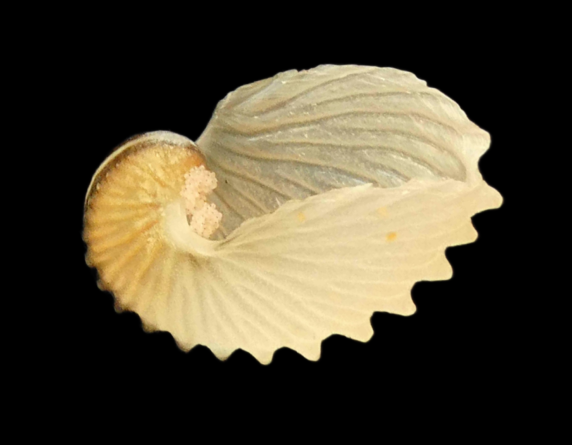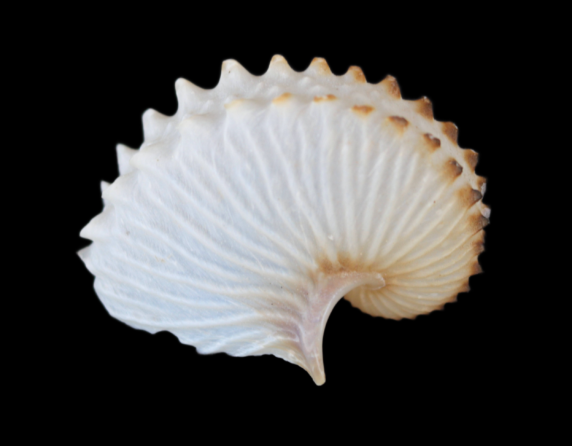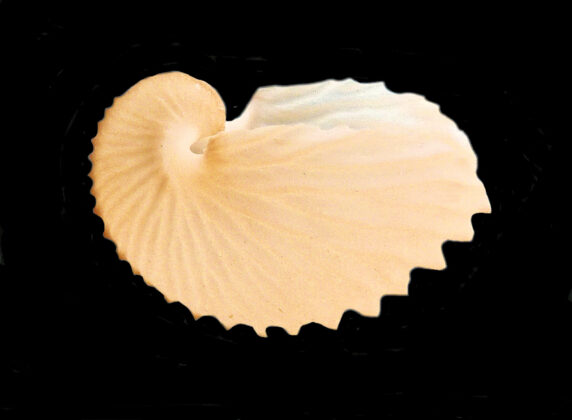Three Cephalopod of the Argonaut or Argonautidae Family can be found in this website:
The Argonauts are members of the Argonautidae Family which has two genera, Argonauta and Ocythoe. The Argonauts lack the water pores found in Ocythoe. There are seven extant species within the Argonauta Genus and several extinct species. The scientific name of the Genus Argonauta, is of mythical Greek origin. The Argonauts were a group of Greek heroes, led by Jason, that traveled to Kolchis to gain the golden fleece. The ship they traveled in was named the Argo. In Greek, Argonaut means “who travels on the Argo.” At one time there were over fifty species of Argonauts described in the scientific literature but that list has now been refined to just six to eight of which three are found along the Baja Peninsula.
The Argonauts are a group of pelagic octopuses that collectively have been called Paper Nautilii. The females secrete a paper-thin egg case that is utilized to rear families and for camouflage, protection, and defense. Argonauts have a rounded body with eight limbs and no fins. They have very large eyes and small webs between the tentacles. They have a funnel-mantle locking apparatus that consists of a knob like cartilage in their mantle and corresponding depressions in the funnel. Their beaks have a small rostrum and a sharp shoulder. The shells, secreted by female’s two elongated dorsal tentacles, are laterally compressed, double keeled and fringed by two rows of alternating tubercles and the sides are ribbed with either flat centers or with winged protrusions. They are made of calcite and 7% magnesium carbonate, with a three-layer construction. Unlike nautilus shells, they lack the gas-filled chamber, and are not a true cephalopod shell, being an evolutionary innovation unique to the genus. The chamber traps surface air to maintain buoyancy and is utilized as a brood chamber.
Only the females of the genus form a shell. The shell is unlike the shells of gastropods in that it is not secreted by the mantle. Instead, it is secreted, and held on to, by two specially modified arms that are widened at the tips, having a sail-like appearance. The shell functions as an egg case and it can be used to trap air in order to provide buoyancy. The shell is paper thin, and provides no defense. The shells consist of a coil, having no spire. The shell is single chambered. The female lives in the shell, protecting the eggs from predator attack until they hatch. The males are approximately one-third the size of the females.
Argonauts are pelagic, spending their entire lives at, or near, the surface of the open sea. Females are sometimes found holding on to one another, forming chains of up to twenty individuals. Otherwise, Argonauts are generally individualistic. Mass strandings of hundreds of individuals on widely distributed beaches has been well documented. Argonauts are seldom found, but based on the number of strandings, and the number found in the stomachs of predators, they are thought to be abundant. Female Argonauts can be ten to fifteen times larger than the males. The males never build a shell. Mating occurs when the male inserts a modified arm into the female’s mantle. This arm functions as a reproductive organ, called a hectocotylus. The hectocotylus breaks off inside the female, where it fertilizes her eggs. Females are known to contain more than one hectocotylus at any one time obtained from different males. Females may also maintain eggs in three stages of development at any one time.
The Argonauts are found in sub-tropical and tropical global waters. They are pelagic and reside on the surface in the open ocean being limited in their depth range, with most found in the first 30 m (100 feet) of the water column. They are small in stature being between 5 cm (2.0 inches) and 20 cm (8.0 inches) in length. The shells range in size from 6.7 cm 2.6 inches) to 30.0 cm (12 inches) in length. The females are normally found with their head and tentacles protruding from the shell, but she can withdraw into the shell for protection. The males have been found within salps. The Argonauts feed diurnally on small crustaceans, mollusks, jellyfish, and salps. They have the ability to use their radula to drill into shelled prey, and then inject toxin. In turn they are preyed upon by billfishes, dorado, dolphins, longsnouted lancetfish and tunas. They have the ability to change color and blend into their surroundings to avoid predation. They also have the ability to produce ink which is utilized to help avoid predation. Argonauts are sexually dimorphic in size and lifespan. Females can reach 10 cm (4.0 inches) in length and have shells that are 30 cm (12 inches) in length while the males reach a maximum of 2.0 cm (0.8 inches) and do not make shells. The females have dorsal tentacles used to create egg cases; the males have a modified arm, the hectocotylus, to transfer sperm to the female which detaches and remains in the female post fertilization. Females reproduce iteroparous and raise many broods; males mate once and have short lifespans. The females have been documented in the literature for centuries; males were only described in the late 19th century. They have the ability to swim with locomotion provided by expelling water through their funnels. In turn they are preyed upon by birds, fish, marine mammals, and other cephalopods.
The argonaut has been the subject of both classical and modern art and utilized in jewelry, pottery, and architecture. They are also featured in the Jules Verne’s Novel Twenty Thousand Leagues Under the Sea, however, in mythical size. Argonauta shells are washed ashore globally, but the collection of an animal still in residence in its shell is a very rare event. Rumor has it that most conchologists would KILL to obtain an Argonaut shell!
 Noury’s Argonaut, Argonauta nouryi
Noury’s Argonaut, Argonauta nouryi Pacific Argonaut, Argonauta pacificus
Pacific Argonaut, Argonauta pacificus